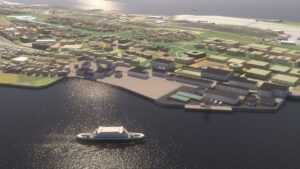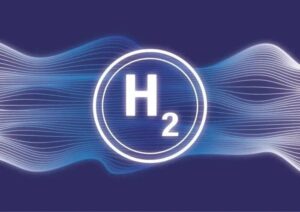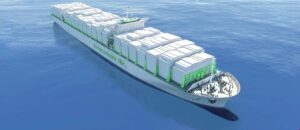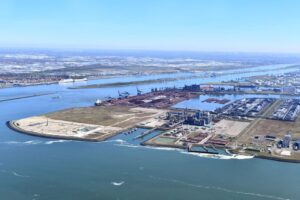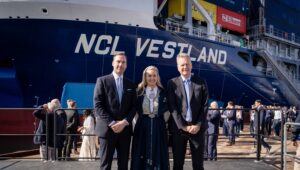Green hydrogen for up to 40 vessels — Norway invests in climate-friendly future
Striving to maintain its position as one of the leading sustainable shipping nations, Norway is investing heavily in hydrogen projects within the maritime sector.
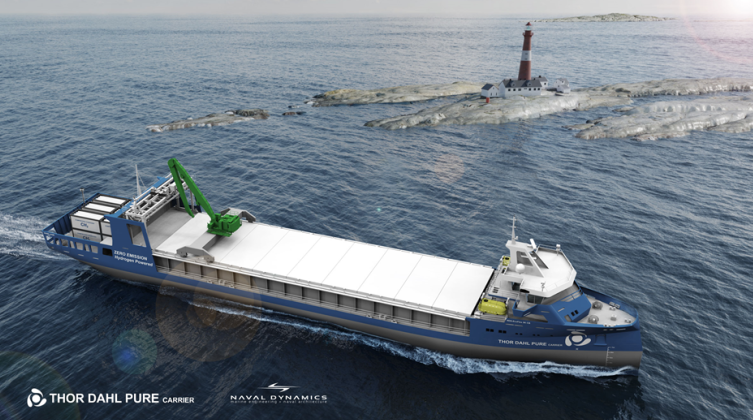

The Northern European country believes that hydrogen can be a key climate solution in the future, especially in the shipping industry.
In late June 2022, Enova, a state enterprise owned by the Ministry of Climate and Environment that promotes more efficient energy use and increased implementation of renewable energy, supported the creation of five renewable hydrogen production plants along the Norwegian coast with NOK 669 million (about $65.5 million).
What is more, Enova granted NOK 451.3 million ($44.1 million) for seven pioneering hydrogen- and ammonia-powered vessels.
“If we succeed here, Norway will strengthen its position as a driving force for emission-free solutions in shipping,” Nils Kristian Nakstad, CEO of Enova, pointed out.
Five hubs to provide green hydrogen for 40 ships
The five green hydrogen projects that received Enova support are Glomfjord, Rørvik, Hitra, Florø and Kristiansand.
With the Enova investment of up to NOK 150 million, the goal is to establish a plant in Glomfjord in Meløy municipality and deliver compressed hydrogen to customers in sea and land transport.
Related Article
-
Future maritime hydrogen hub in Glomfjord gets Enova funding
Business Developments & Projects
Additionally, production facilities for green hydrogen in Rørvik won up to NOK 125.7 million in Enova funding. As part of the project, NTE and H2 Marine, in collaboration with several players, will build a hydrogen production plant, in order to be able to supply hydrogen to a wide range of vessels.
The third project, Hitra, received up to NOK 113 million in Enova funding. With the production set to begin in 2025, the joint project between TrønderEnergi and Statkraft wants to establish a plant for hydrogen production and bunkering at Hitra Industrial Park and Coastal Harbor, Jøsnøya.
Another project backed with up to NOK 132 million by Enova is HyFuel’s production plant for green hydrogen in Florø.
Finally, Enova allocated up to NOK 148 million to Hydrogen Hub Agder. The goal is to produce and sell compressed hydrogen to boats that are en route via Kristiansand.
Related Article
-
Everfuel, Greenstat receive Enova funding for Hydrogen Hub Agder
Business & Finance
With these five production facilities, Norway hopes to establish an infrastructure that will enable further technology development in the industry.
The hubs will be able to supply fuel to the seven hydrogen-powered vessels supported by Enova in June. What is more, the production plants will have the capacity to bunker up to 40 ships with green hydrogen.
Paving the way for zero-emission shipping, Norway backs seven hydrogen-powered ships
A total of three projects encompassing seven hydrogen-powered vessels secured Enova funding. They include Færder Tankers Norway AS, Ocean Infinity and Thor Dahl Bulk.
Enova supported the world’s first ammonia-powered tankers and car carriers with NOK 205.6 million. Færder Tankers AS will build two tankers and two car carriers that use ammonia as fuel. The four vessels are said to be the first deep sea vessels that can run virtually emission-free.
Moreover, Enova awarded grant for the world’s first hydrogen-powered container ship worth NOK 148.6 million. Ocean Infinity will build the first two container vessels that use hydrogen as fuel. The goal is to offer an emission-free sea transport of containers between Rotterdam and the Oslo Fjord. The ships will enter into a long-term contract for Samskip and are supported through Pilot-E.
Related Article
-
SeaShuttle hydrogen-fuelled containership project wins Enova funding
Business & Finance
The third ship project aided by Enova with NOK 97 million is a hydrogen-powered bulker to be built by Thor Dahl (TD). The vessel will use compressed hydrogen when using fuel cells. Thor Dahl PURE carrier is a 5,000 tonne zero emission bulk carrier, designed to sail up to 1,000 nautical miles without emitting either CO2, NoX or SoX.
“These ships are among the first in the world to use hydrogen for propulsion, and the hubs that are now supported by Enova will ensure that the fuel becomes available to them. In total, the hubs will have a capacity to deliver hydrogen to between 35 and 40 vessels,” Nakstad revealed.
Norway bets big on hydrogen-empowered green transition
Norwegian hydrogen strategy is regarded as a key to achieving the government’s target for greenhouse gas (GHG) emissions in 2050 to be reduced by between 90 and 95 per cent compared to 1990 levels.
As the country strives to become a low-emission society by 2050, it is pursuing an ambitious climate and environmental policy, with measures to reduce GHG emissions.
In the context of the energy transition, hydrogen is said to present an exciting opportunity for Norway, both as an energy nation and a technology nation.
Last month, the country’s government presented a roadmap for a green industrial boost, setting out measures to bring the country into a low-carbon emissions era through the help of seven industries, which are seen as crucial to curbing emissions and achieving net-zero goals.
Within this framework, renewable energy takes center stage as the key enabler of the transition to a green industry.
Related Article
-
Banking on renewable energy, Norway outlines roadmap to turn into ‘green industrial giant’
Authorities & Government
Hydrogen and the maritime industry are among the seven focus areas believed to have great growth opportunities. Other five focus areas include offshore wind; batteries; CO2 management; forestry, wood and bioeconomy; and the process industry.
“Hydrogen and the green maritime industry are two of seven priority areas in the roadmap for a green industrial boost that the government is launching… Enova’s support of more than one billion kroner for five hydrogen hubs and seven hydrogen-powered ships supports this green industrial promise,” Minister of Climate and Environment Espen Barth Eide said.
“The government has significant ambitions related to the development of hydrogen and wants to contribute to building a coherent value chain for hydrogen produced with no or low emissions… It is gratifying that there are a large number of hydrogen projects along the entire value chain under development throughout Norway. The green industrial promise to the government will further contribute to the development of hydrogen in Norway,” Minister of Petroleum and Energy Terje Aasland noted.
Norway preparing the ground for large-scale hydrogen exports
The accelerated development of the hydrogen infrastructure in Norway may have wider implications on the European hydrogen supply chain.
Specifically, the country wants to contribute to Europe’s efforts to end its reliance on Russian gas as soon as possible.
In light of this, German Vice-Chancellor Robert Habeck signed a joint statement on energy cooperation with Norwegian Prime Minister Jonas Gahr Støre in March this year. Germany would like to see Norway become a future partner for the production and supply of hydrogen.
The two EU member countries want to collaborate closely with the aim to realise large-scale hydrogen imports from Norway to Germany as quickly as possible.
They are now studying plans for the construction of a hydrogen pipeline. In the transition period, they will also consider the role of blue hydrogen before ramping up the production of green hydrogen.
Register for Offshore Energy Exhibition & Conference:

